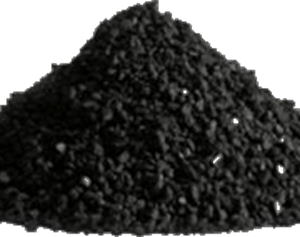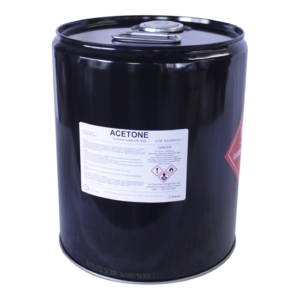Description
Sodium Bicarbonate
From Wikipedia, the free encyclopedia
Sodium bicarbonate is the chemical compound with the formula NaHCO3. Because it has long been known and is widely used, the salt has many other names including sodium hydrogencarbonate, sodium bicarb, baking soda, bread soda, cooking soda, bicarb soda, saleratus or bicarbonate of soda. It is soluble in water. Sodium bicarbonate is a white solid that is crystalline but often appears as a fine powder. It has a slight alkaline taste resembling that of sodium carbonate. It is a component of the mineral natron and is found dissolved in many mineral springs. The natural mineral form is known as nahcolite. It is also produced artificially.
Production
NaHCO3 is mainly prepared by the Solvay process, which entails the reaction of sodium chloride, ammonia, and carbon dioxide in water. It is produced on the scale of about 100,000 ton/year (year: 2001).[1]
Commercial quantities of baking soda are also produced by this method: soda ash, mined in the form of the ore trona, is dissolved in water and treated with carbon dioxide. Sodium bicarbonate precipitates as a solid from this method:
Na2CO3 + CO2 + H2O → 2 NaHCO3
Acid-base reactions
NaHCO3 is a salt which consists of the ions Na+ and the bicarbonate anion, HCO3-. In aqueous solution, these ions are separated. Furthermore the bicarbonate anion forms some hydroxide, which results in its solutions being mildly alkaline:
HCO3- → CO2 + OH-
CO2 + 2NaOH → Na2CO3 + H2O
It also reacts with water during hydrolysis
Reaction of sodium hydroxide with carbon dioxide
NaHCO3 may be obtained by the reaction of carbon dioxide with sodium hydroxide :
The initial reaction produces sodium carbonate:
CO2 + 2NaOH → Na2CO3 + H2O
It reacts further with carbon dioxide and water to produce sodium hydrogen carbonate, which precipitates out of solution:
Na2CO3 + CO2 + H2O → 2NaHCO3
Decomposition
These reactions are reversible. Treatment of sodium bicarbonate with an acid, releases carbon dioxide and water:
NaHCO3 + HCl → NaCl + H2O + CO2 (gas)
NaHCO3 + CH3COOH → CH3CO2Na + H2O + CO2 (gas)
Thermal decomposition
Above 60 °C, it gradually decomposes into sodium carbonate, water and carbon dioxide. The conversion is fast at 200 °C:
2NaHCO3 → Na2CO3 + H2O + CO2
Most bicarbonates undergo this dehydration reaction. Further heating converts the carbonate into the oxide:
Na2CO3 → Na2O + CO2
These conversions are relevant to the use of NaHCO3 as a fire-suppression agent (“BC powder”) in some dry powder fire extinguishers.
History
The word saleratus, from Latin sal æratus meaning “aerated salt”, was widely used in the 19th century for both sodium bicarbonate and potassium bicarbonate. The term has now fallen out of common usage.
Applications
For neutralization of acids
The reaction of acids with sodium bicarbonate is a common method for neutralizing acid spills. The advantage to this method is that one can use excess sodium carbonate, which is relatively innocuous. The neutralization process is signaled by the release of gaseous CO2. A wide variety of applications follow from its neutralization properties including ameliorating the effects of white phosphorus in incendiary bullets, from spreading inside a soldier’s afflicted wounds. Military Application
It is commonly used to increase the pH and total alkalinity of the water for pools and spas. Sodium bicarbonate can be added as a simple solution for restoring the pH balance of water that has a high level of chlorine.
It is sometimes used in septic tanks to control pH and bacteria.
It neutralizes battery acid (H2SO4):
2 NaHCO3 + H2SO4 → Na2SO4 + 2 H2O + 2 CO2
Baking soda has many uses.
- As a deodorizer
- An absorbent for moisture and odors e.g; an open box can be left in a refrigerator for this purpose. However, according to one source, baking soda does not actually absorb odors well when used in a refrigerator.
- To help relief itching due to bacterial infections
As pest control
- It may be used to kill fleas, ants, and other insect pests; the powder abrades their exoskeletons. If it is applied to a pet’s fur, it should be rinsed off to prevent skin problems.
- Can be used to kill crab grass. Must be used repeatedly to control but is effective. Dampen area then sprinkle lightly, too much may harm desired grass temporarily.
- Cosmetic uses
- As a cleaning agent
- A paste from baking soda can be very effective when used in cleaning and scrubbing.
- A solution in warm water will remove the tarnish from silver when the silver is in contact with a piece of aluminum foil.
- Cleans brushes and combs to prevent residues.
- Use to clean juice, wine, and coffee stains.
- Pouring 1 cup of baking soda down a drain and following with 1/2 gallon of vinegar will degrease the drain.
Other uses
- It is used as a fabric softener in laundry.
- It is used to test garden soil for acidity. If it bubbles, the soil is too acidic.
- If mixed with super glue, it makes a suitable filling for cracks in walls.
- Baking soda can be used as a low-cost alternative to raise pH in swimming pools.
- As a desiccant, sprinkle on wet pages of books and then put them out to dry under the sun.
- Sodium bicarbonate is used in BC Dry Chemical fire extinguishers as an alternative to the corrosive ammonium phosphate in ABC extinguishers. The alkali nature of Sodium Bicarbonate makes it the only dry powder, excluding Purple-K, agent allowed for use on commercial deep fat fryers, the agent forms a crust over the surface similar to the effects of a wet chemical.
- Sodium bicarbonate is often used in the pharmaceutical industry as an additive to cell culture media. It acts as a weak buffer.
Safety
Sodium bicarbonate is considered to be relatively safe, however consumption of large amounts should be avoided. See MSDS.






